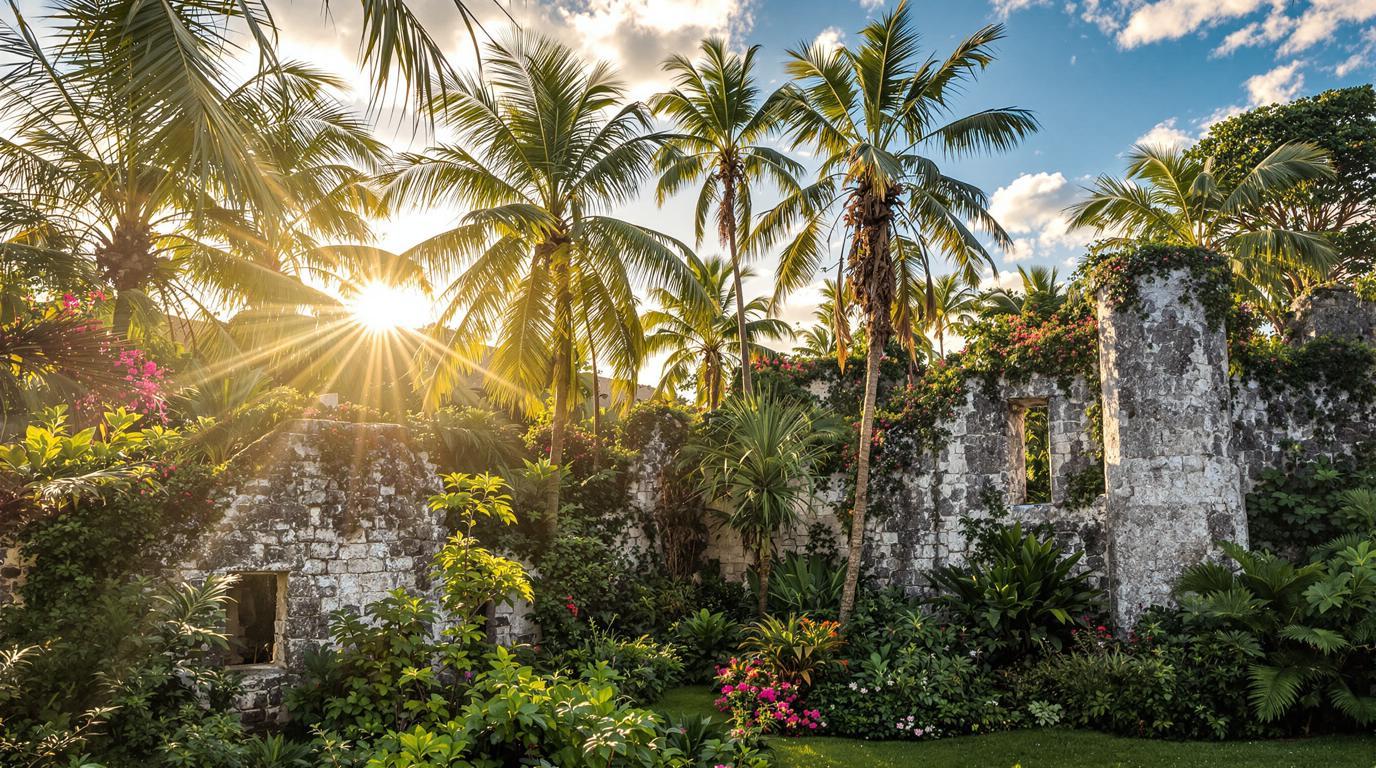I stepped off the rusted ferry onto Île de Batz as the Atlantic breeze carried the unexpected scent of eucalyptus across the harbor. This wasn’t the Brittany I knew – all granite cottages and windswept pines. Instead, just ten minutes from mainland France, I’d discovered a subtropical anomaly where palm trees sway against medieval ruins, their fronds catching the golden hour light that photographers chase across continents.
Where North Atlantic waters nurture a Mediterranean soul
Île de Batz sits like a geological contradiction – a car-free French island where the Gulf Stream creates a microclimate so gentle that exotic species thrive where they have no botanical business surviving. The island’s crown jewel, Jardin Georges-Delaselle, began in 1897 when a Parisian insurance executive with botanical obsessions purchased the eastern headland.
“We are gardeners of borrowed paradise,” explains Mathilde, the garden’s head botanist, her calloused hands gesturing toward this French island paradise with exotic flora. “Delaselle understood that this windswept rock could protect plants from five continents if he worked with nature rather than against it.”
Today, the garden hosts over 2,500 species, including 34 varieties of palm trees that have no business thriving at 48° North latitude – the same as Quebec City.
Wandering through improbable botanical treasures
The secret eucalyptus grove path
Beyond the garden’s ticketed entrance lies a footpath known mainly to islanders. Following the eastern seawall, I discovered a grove of hundred-year-old eucalyptus trees forming a cathedral-like tunnel leading to a secluded cove. The morning light filters through their paperback trunks, creating dancing patterns on the sandy path below.
Here, low tide reveals tidepools teeming with electric blue sea anemones – the perfect natural aquarium for morning meditation before the day-trippers arrive on the first ferry.
The lighthouse keeper’s abandoned cottage
Near the western tip stands a crumbling stone cottage, its slate roof partially reclaimed by nature. The island’s last permanent lighthouse keeper lived here until 1983, maintaining a now-automated beacon. The cottage’s garden has gone gloriously wild, with escaped roses climbing up maritime pines in impossible spirals.
Unlike this medieval volcanic village on the mainland where tourism has polished every corner, here nature reclaims human spaces at its own pace. Local children sometimes leave sea glass arrangements on the cottage’s windowsills – tiny kaleidoscopes catching the afternoon sun.
Feasting where sea meets soil in unlikely harmony
At the unassuming harbor café Le Dauphin, I discovered the island’s culinary contradiction – a dish simply called “Assiette de l’Île.” Third-generation fisherman Marcel serves just-caught mackerel alongside vegetables grown in the island’s sandy, salt-sprayed soil. The fish is barely cooked, kissed by heat and finished with olive oil pressed from trees that grow alongside the garden’s Mexican cacti.
“Our vegetables taste like nowhere else,” Marcel tells me, “because they grow with their roots in the Atlantic.” His potatoes, smaller than mainland varieties, carry a natural brininess that eliminates the need for added salt.
Navigating an island of contradictions
Timing the tides
Unlike this dramatic tidal island experience elsewhere in France, Île de Batz is accessible year-round, but ferry schedules contract dramatically between November and March. Summer brings hourly crossings, while winter may offer only three daily departures. The last evening ferry leaves earlier than you might expect – check times religiously.
Bicycle diplomacy
Rent bicycles immediately upon arrival – not just for convenience but as an act of cultural integration. The island’s permanent population (fewer than 500 souls) uses bikes as their primary transportation. Pedestrians should yield to cyclists on narrow paths, especially near the island’s working farms where tractors are the only motorized vehicles permitted.
The lingering essence of improbable paradise
As twilight descends, I sit among Chilean palm trees at Jardin Georges-Delaselle, listening to the Atlantic crash against Brittany’s ancient rocks. This garden shouldn’t exist – scientifically, historically, geographically. Yet it persists, a testament to human vision collaborating with nature’s quiet resilience. In our era of climate anxiety, this improbable garden offers something beyond beauty: hope that with care and understanding, we might yet create harmonies where discord seems inevitable.
